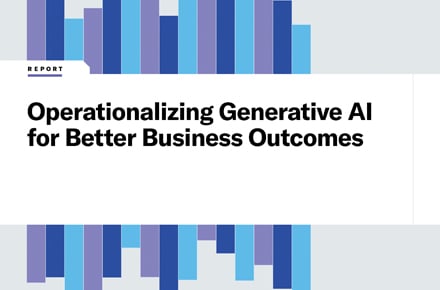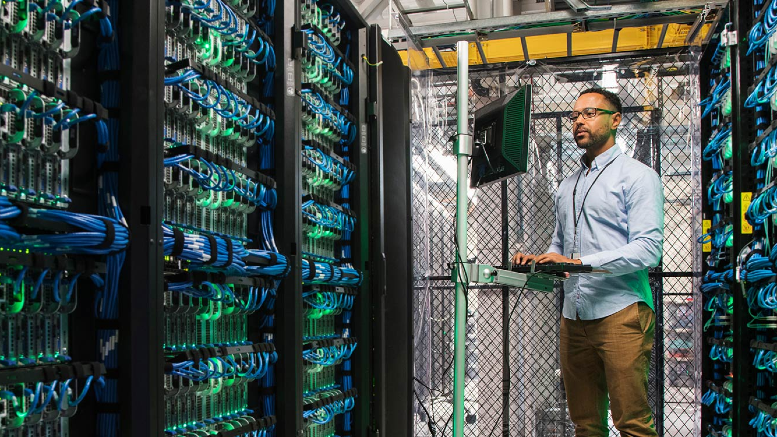Budget cuts driving government innovation: The efficiency paradox
Juni 23, 2025 / Mike Thomson
Short on time? Read the key takeaways:
- Budget constraints are forcing governments to innovate rather than simply cut services
- AI applications in citizen services are gaining traction, especially for multilingual support
- Strategic infrastructure decisions balance cost, speed, privacy and sovereignty requirements
- Data sovereignty concerns are shaping how governments implement emerging technologies
The macros of today create interesting dynamics, especially in government work. Agencies face budget pressures from multiple directions - whether it's sweeping efficiency initiatives, global economic headwinds, or trade tensions affecting gross domestic product. Yet something unexpected happens when these pressures collide with citizen expectations.
Instead of simply cutting services, agencies are finding they need to invest in efficiency to maintain the level of service citizens expect. This creates a counterintuitive dynamic where budget constraints actually drive innovation.
What drives government digital transformation
Three things shape how agencies approach technology today.
- Economic pressures force innovation. When agencies face budget cuts, they examine how they operate. The ones that succeed find ways to maintain service levels while reducing operational costs. This typically requires technology investments that pay dividends over time.
- Legacy systems create both problems and opportunities. Many agencies operate on infrastructure that's decades old. While this can pose limitations, it also shows clear areas where modernization delivers immediate returns. The key is approaching these upgrades strategically rather than trying to change everything at once.
- Citizen expectations have fundamentally shifted. People expect digital government services that match their experience with private sector applications. They want information available instantly, forms that make sense, and processes that don't require multiple office visits.
These pressures work together to push agencies toward technology solutions that seemed optional just a few years ago.
Strategic infrastructure decisions
The approach to government IT has become more sophisticated. Rather than adopting a one-size-fits-all strategy, agencies are thinking carefully about where different workloads should run.
Government infrastructure decisions now involve traditional on-premises systems, private cloud, public cloud, edge computing, and specialized AI infrastructure. Understanding when each environment makes sense requires weighing financial constraints, performance requirements, data sensitivity, regulatory compliance, and often competing priorities from different stakeholders.
Cloud computing remains central to most strategies, but agencies are learning to match workloads to their optimal environments. A citizen-facing application might benefit from public cloud scalability, while sensitive data processing requires the control of private environments. Field offices can use edge computing to run routine operations faster without waiting for round trips to central data centers, improving response times for citizens. AI workloads often require specialized infrastructure with the right GPU capabilities.
Most agencies develop hybrid approaches that optimize each workload for its specific requirements. This creates more management work, but it also enables better performance, cost control, and security.
AI in government: Practical applications
Government agencies are embracing AI, but their approach differs from private sector implementations. The focus centers on applications that improve citizen services while maintaining strict privacy and security standards.
AI implementations typically address specific citizen service challenges. Natural language processing enables government websites to provide information in multiple languages, particularly valuable as agencies serve increasingly diverse populations. Knowledge management systems help citizens navigate complex processes by providing step-by-step guidance for common tasks.
Applications like this work because they enhance existing services without requiring access to sensitive personal data. They improve user experience while maintaining the transparency and accountability that government operations require.
More sophisticated AI applications face additional scrutiny. Agencies rightfully demand clear audit trails, transparent decision-making processes, and robust privacy protections. This measured approach reflects responsible implementation rather than resistance to innovation.
Think about delivering government services and needing to accommodate 15 different spoken languages. You can apply AI technology to accept natural language processing in any language, deliver results in any language, and tap into a knowledge database that provides consistent, accurate guidance to citizens. Machine learning can continually build out that knowledge database and improve results. That's the kind of application that works; it improves accessibility without compromising data security.
Security imperatives driving change
Post-quantum cryptography is becoming a pressing concern for government agencies. Government agencies have decades of sensitive data stored on systems that may not support advanced encryption methods. As quantum computing capabilities advance, these legacy systems become increasingly vulnerable. Agencies are realizing they need to modernize certain systems to protect citizen data, regardless of other budget considerations.
This looming security threat creates opportunities for broader modernization. When agencies have to upgrade systems for security reasons, they can simultaneously improve functionality, user experience, and operational efficiency. The key is using security requirements to drive comprehensive improvement rather than isolated upgrades.
Global perspectives
These trends extend beyond any single country or region. Government agencies worldwide face similar pressures and opportunities. Data sovereignty requirements vary by location, but the underlying need for efficient, secure, citizen-focused services remains consistent.
International agencies often prefer working with technology partners who can deliver services locally. This approach addresses sovereignty concerns while providing access to specialized expertise. Local delivery models also reduce geopolitical friction in an increasingly complex global environment.
We see a worldwide movement toward government digital transformation, driven by similar economic and citizen service pressures across different regions and political systems.
From pressure to progress
The current environment presents real opportunities for government agencies willing to think strategically about technology investments. Agencies that view budget pressure as an innovation driver will deliver better citizen services while operating more efficiently.
Ready to explore how strategic technology investments can help your agency deliver better citizen services while optimizing costs? Learn more about our public sector solutions or contact us to discuss your specific challenges and opportunities.




















